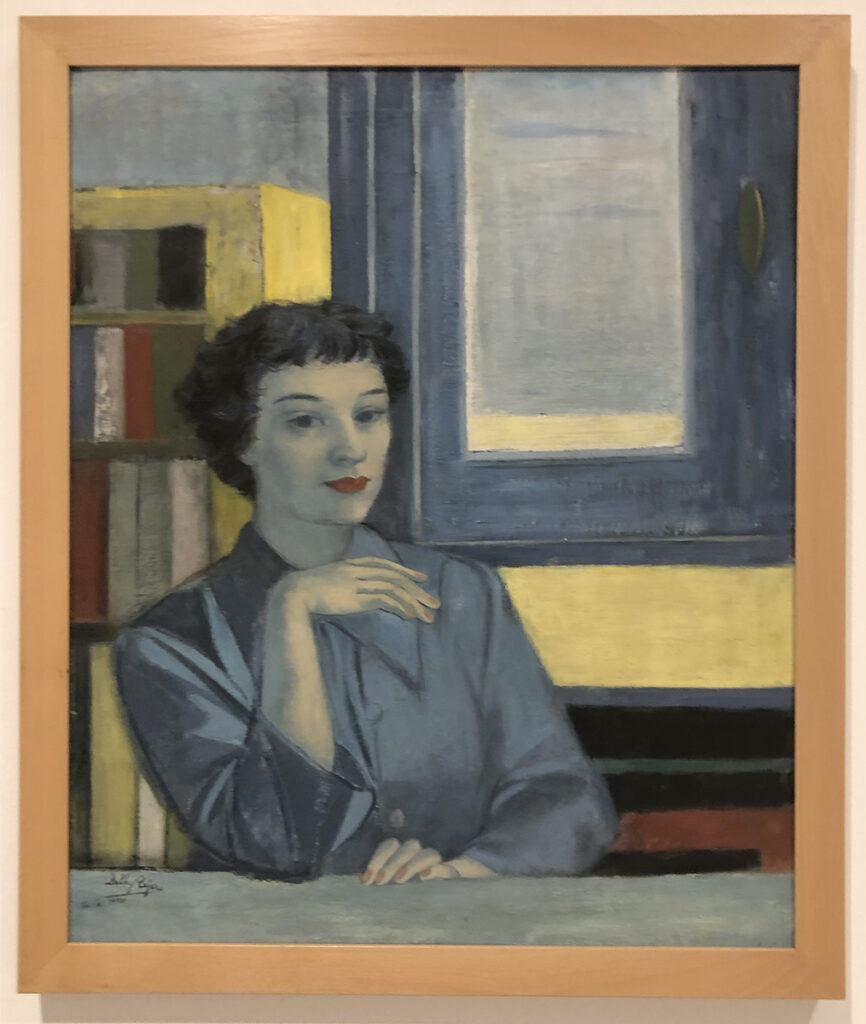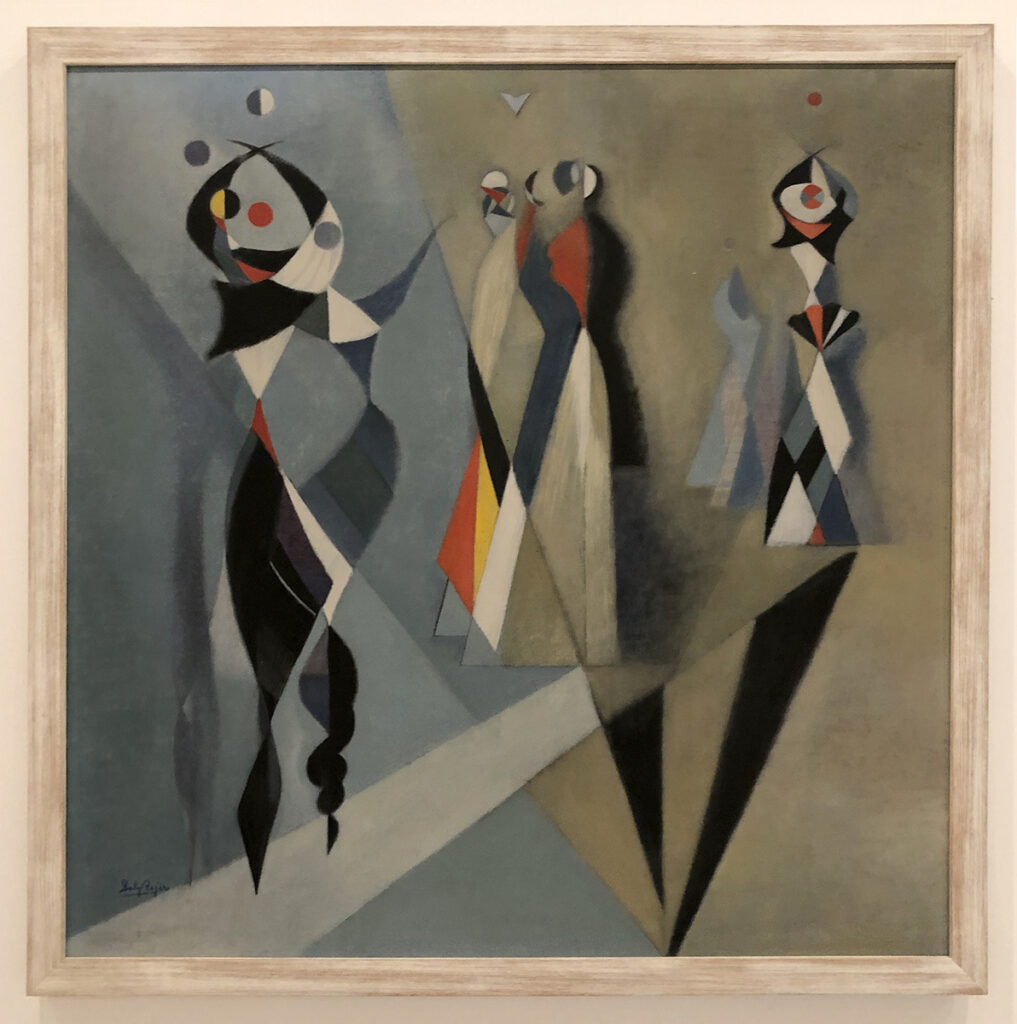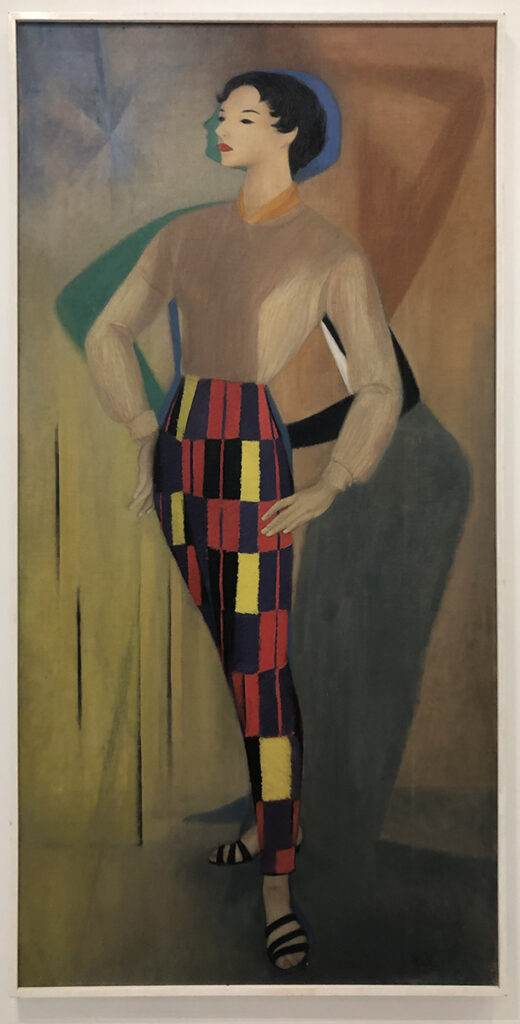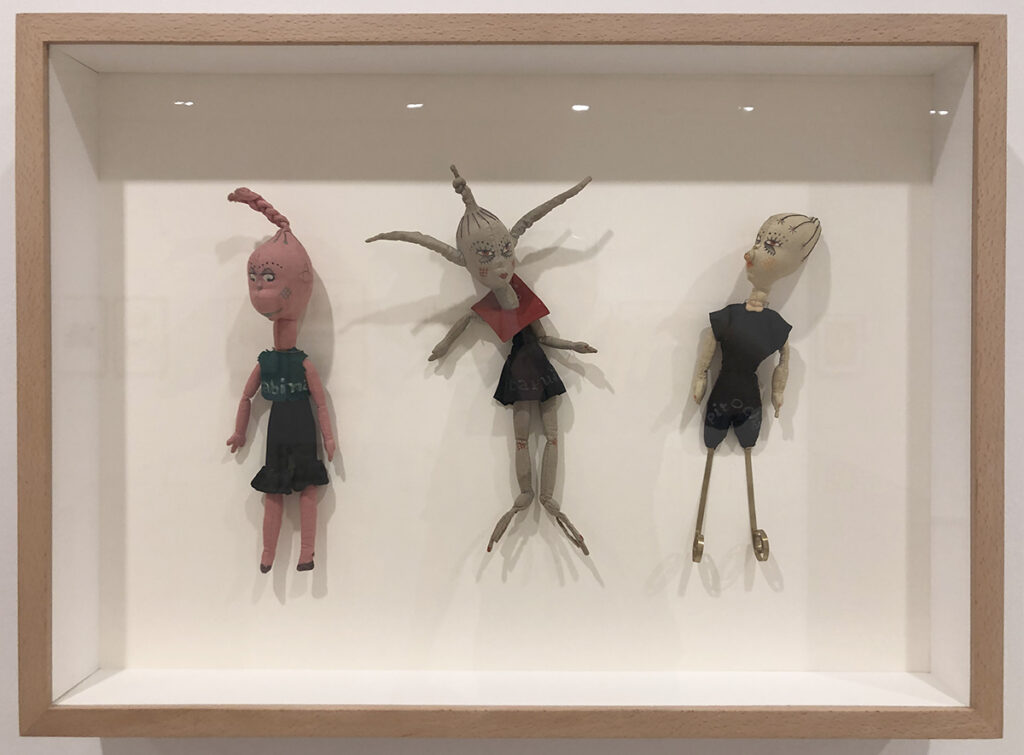by D. Dominck Lombardi
When first entering the exhibition Delhy Tejero: Mysterious Geometry, one observation you will most likely make is the diversity of styles the artist engaged in. From folkish traditional, illustrative and playful to Modernist, non–representational and fantastical, she endeavored them all. Never a forerunner in any particular movement, Tejero clearly contributed to many of the popular movements of her day and in her own distinct way, often combining disparate approaches such as abstraction and surrealism. This was her way of visually responding to the art world, putting her own spin on things as if to say “I am here too.”
There is also a great sense of pride in the works of Tejero, a sureness that can be seen in lively to illusive colors and a passion that comes through in the believability of her subjects. This is the eclectic energy one experiences when walking through this delightful and comprehensive exhibition in one of the more elegant and impressive settings in the whole of Valladolid, Museo Herreriano Patio.

The one common thread that runs through all of Tejero’s art is a wonderful, and at times rather unpredictable sense of color combined with a striking command of media. Take for instance Self Portrait (1950), where we see the artist in repose seated at a table. The soft lighting and compelling color theory, the consistent and seamless handling of paint, the geometry of the interlocking – yin yang-like ‘L’ sections of the background and how that is mimicked in the gesture of the right hand tells us much of the artist’s thoughts and tendencies at the time. This preference for inter-responsive forms is further investigated in an abstract way in The Music (1952-53) where highly stylized figures twist and intertwine presumably inspired by spirited music. Working again with a somewhat limited palette, Tajero composes with strong diagonals in streaks of light and dark, a dynamic space that highlights the larger figures on the left, resulting in their elevation of importance. Perhaps these two are seasoned performers, possibly Flamenco dancers turning the three or four forms to the right into admiring onlookers.

Then there are the paintings that have that soft, Beat generation style with overtones of a cool 1950’s Madison Avenue aesthetic that I love seeing, which probably has a lot to do with my being born in the same decade. Mussia (1954) is right in the wheelhouse of that genre, and it speaks very specifically about the artist’s public persona that was poised and progressive. More importantly, this painting shows a willingness to reflect what interests the artist with regard to the contemporary art scene. I say this because the faux painted vertical cuts in the canvas are a direct reference to Lucio Fontana, who would have been very well known by the mid 1950’s. Then there are the shadows or ghost features that surround the main subject that suggest movement, impatience or even changes made to the pose that are monochromatically painted in and emphasized. Being a painter myself, sometimes it is easier to multiply gestures than trying to restore a background that consists of a thinly applied wash, which can take several attempts and likely ruin the surface of a painting.

In a surprisingly different direction are Rabina, Taruja and Pitocha (1929-32), handmade dolls referring to three of the six ‘witches’ that Tejero sees as her little helpers during the creative process. There are a number of drawings and gouache paintings here as well, that show how engaged the artist was with these six distinctive, elf-like characters, revealing a very personal and playful side of Tejero, who was most often thought of as being rather exotic and mysterious in her self designed attire that enhanced her uncommon manners. Seeing these designs, which are far more cartoon-like than realistic, I wonder if Theodor Seuss Geisel (Dr. Seuss) may have stumbled upon one or two of these characters. If this is so, I can clearly see how they may have inspired his famous children’s books, especially the stories with the now famous, or infamous Grinch.

Delhy Tejero: Mysterious Geometry, Museo Herreriano Patio, Spanish Contemporary Art Museum, Valladolid, Spain
